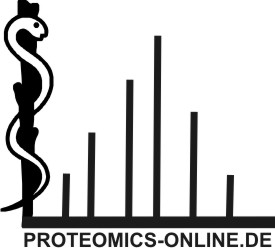
Home
Research
Methods
Members
Publications
Contact
Disclaimer
© Proteomics-online.de
Protein Electrophoresis
Polyacrylamide-gel-electrophoresis (PAGE) is one of the most widely
applied techniques for protein separation. Thereby, the proteins
migrate within a polyacrylamide matrix driven by the force of an
electric field. Various denaturing and non-denaturing methods have been
developed for different separation strategies such as isoelectric
focussing (separation according to net charge), SDS-PAGE (separation
according to size) or BN-PAGE (separation of protein complexes). Both
one- and two dimensional systems can be applied granting the
possibility to separate thousands of different proteins and protein
isoforms. The good compatibility to mass spectrometric methods is a
further advantage of these methods.
HPLC
Fast Protein Liquid Chromatography (FPLC) and High Performance Liquid
Chromatography (HPLC) are widely used methods for the separation of
proteins and peptides. Various properties of the proteins/peptides may
be used for separation with regard to the applied technique such as
ion-exchange, reversed-phase, hydrophobic interaction, gel filtration
and affinity chromatography.
ESI-MS/MS
For Electrospray-Ionization-Tandem-Mass Spectrometry (ESI-MS/MS) protein-
or peptide-solutions are sprayed in an electric field. The obtained
protein-/peptide-ions are desolvated and analyzed in the QToF by
an electric field. All incoming ions can sequentially be isolated,
fragmented and the obtained fragment ions are ejected towards the
detector.
nano-LC-MS/MS
Online-coupling of nano-reversed-phase-HPLC and
tandem-mass-spectrometry facilitates the identification of peptides and
proteins from proteolytic digests. Thereby, also proteins from crude
mixtures can be identified down to the low-femtomole level.